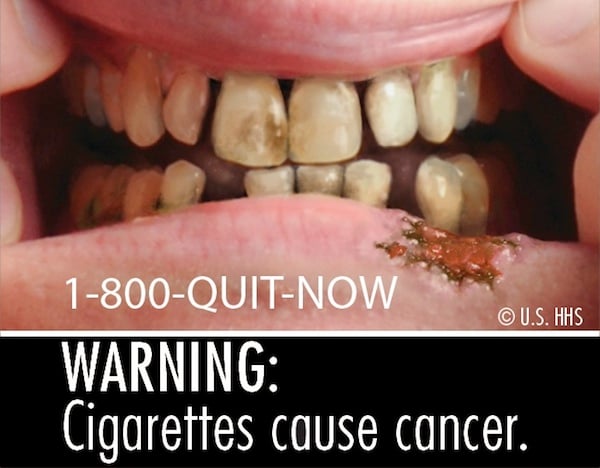Slideshow: The FDA’s New Cigarette Warning Labels
The Food and Drug Administration is taking a tough-love approach when it comes to smokers. Its nine new warning labels and graphics, released today, will appear on all cigarette cartons and ads beginning September 2012.
With straightforward text like “Warning: Smoking can kill you” and “Cigarettes are addictive,” the labels don’t mince words. The FDA calls the campaign a “bold measure” aimed at preventing kids from smoking, urging adults to quit, and ensuring “every American understands the dangers of smoking,” according to a press statement.
Besides text, the labels include some graphic images, such as renderings of diseased lungs; yellowed, rotten teeth; and a stitched-up corpse. Under the new regulations, the warning labels will be much more prominent than they are now, covering nearly half of the packaging. And they’ll include a phone number—1-800-QUIT-NOW—for access to a smoking help line.
The FDA believes the labels will have a “significant public health impact,” making a dent in the 443,000 deaths a year linked to tobacco use and the $200 billion yearly health-care cost.
This marks the first major change in cigarette labeling in 25 years. The nine labels, selected from a pool of 36 that were proposed, are based on the results of a study that included 18,000 people and input from the tobacco industry, retailers, public-health groups and agencies, and consumers.
Will the labels be effective? The dangers of smoking have long been understood, but the idea here is that being physically confronted with the health outcomes of smoking might convince more smokers to quit.
In 2000, Canada introduced similarly graphic warning labels for its tobacco products, which cover 50 percent of the front and back of cigarette packages. Researchers in Ontario conducted a study four years later, asking 616 smokers about their reaction to the labels. They found that about a fifth reported smoking less; 58 percent said the labels caused them to experience “disgust” and 44 percent felt “some fear.”
“Smokers who reported greater fear and disgust in response to the labels were significantly more likely to have read and thought about the warnings,” the study says. The same group was also "significantly more likely to have quit, made an attempt to quit, or reduced their smoking at follow-up.”
The study also found that only 13 percent of smokers thought the warning labels were inaccurate in their depiction of the health risks associated with smoking. Fifty percent wanted to see even more health information on the packaging.
The 2009 Canadian Community Health Survey found that smoking rates had declined significantly since 2001. According to the data, 23 percent of Canadian men are smokers, compared with 28 percent in 2001, and 18 percent of women are smokers, down from 24 percent eight years earlier.
Subscribe to Washingtonian
Follow Well+Being on Twitter
More >> Health | Top Doctors | Well+Being Blog


















